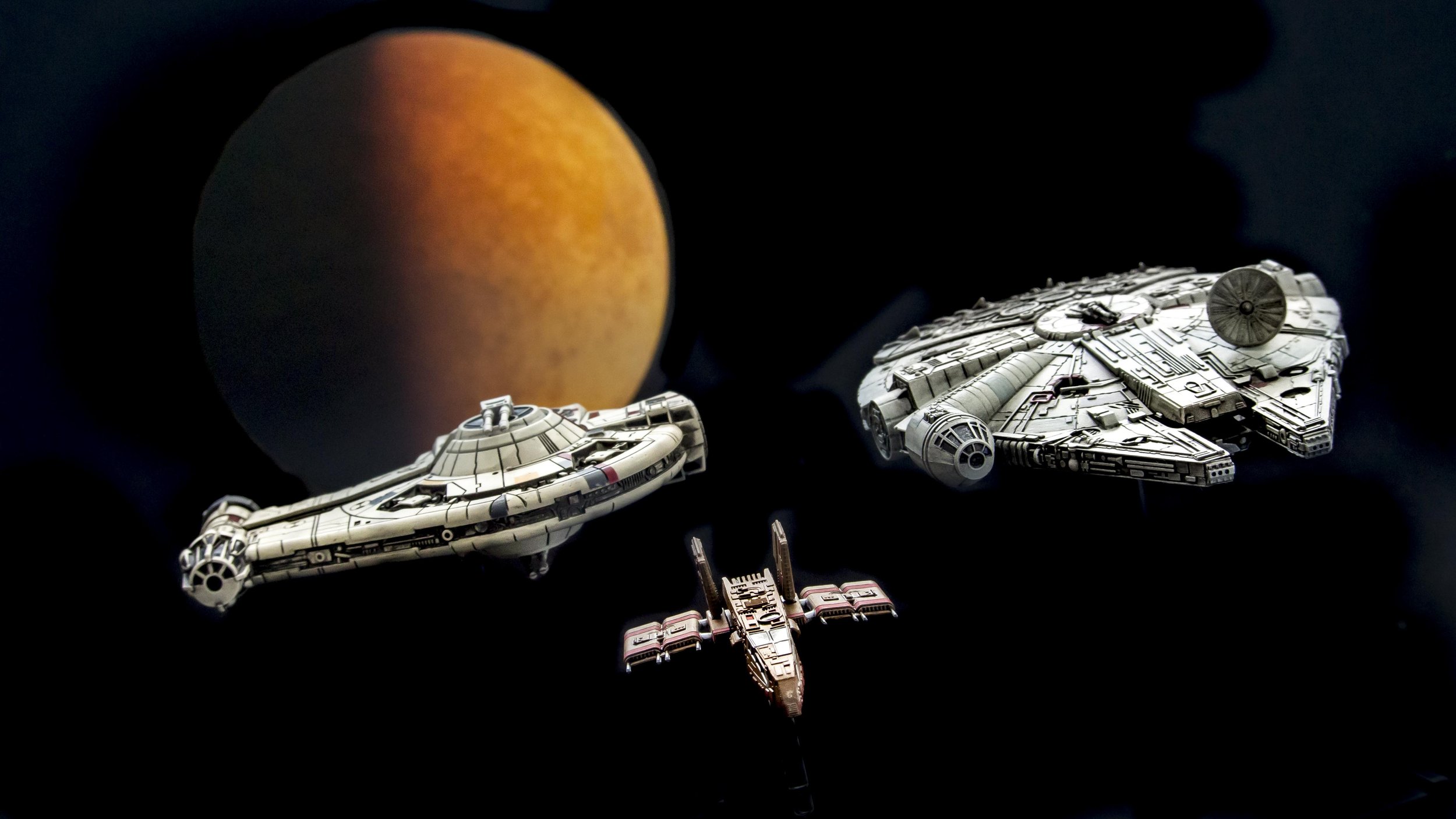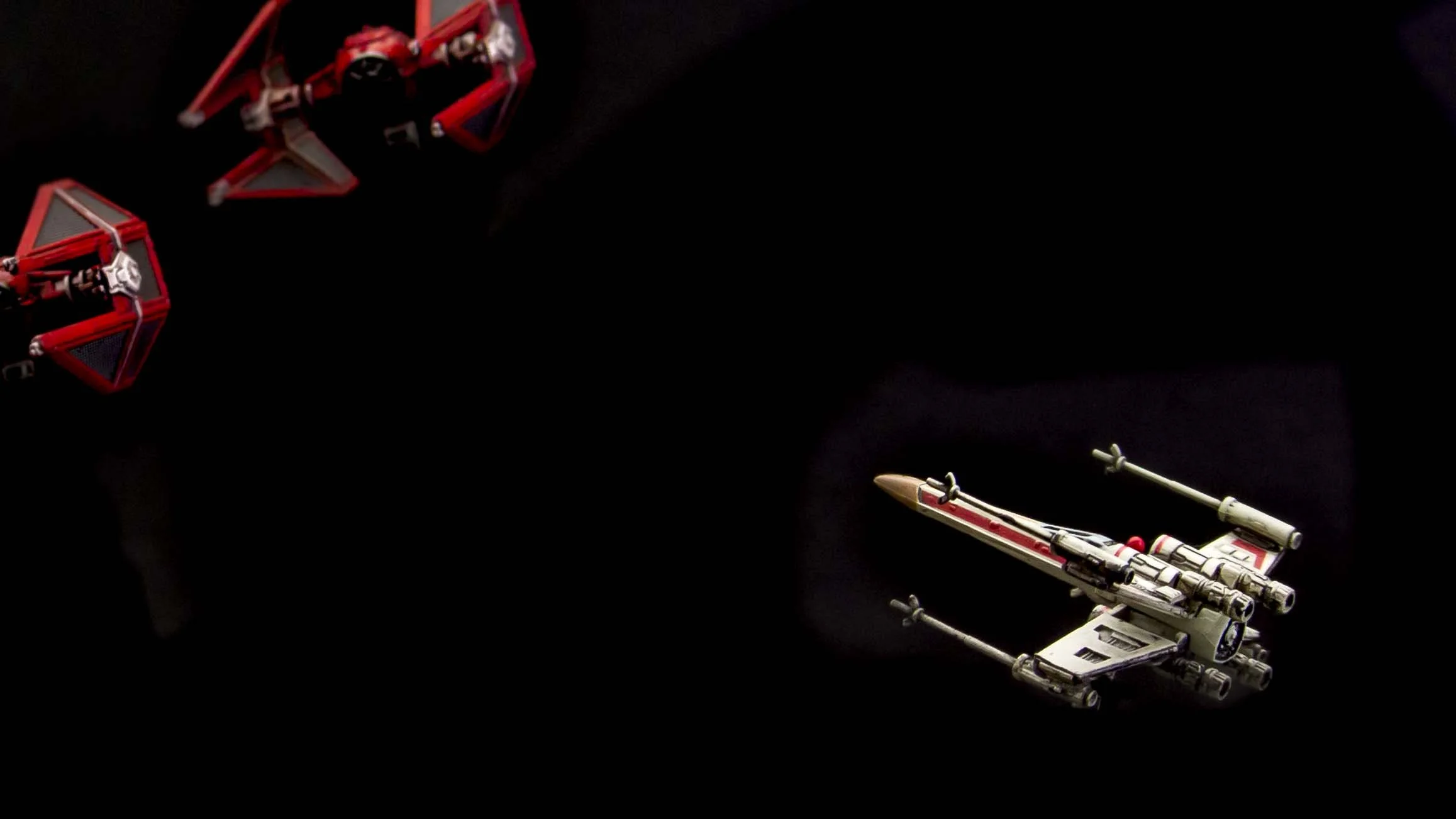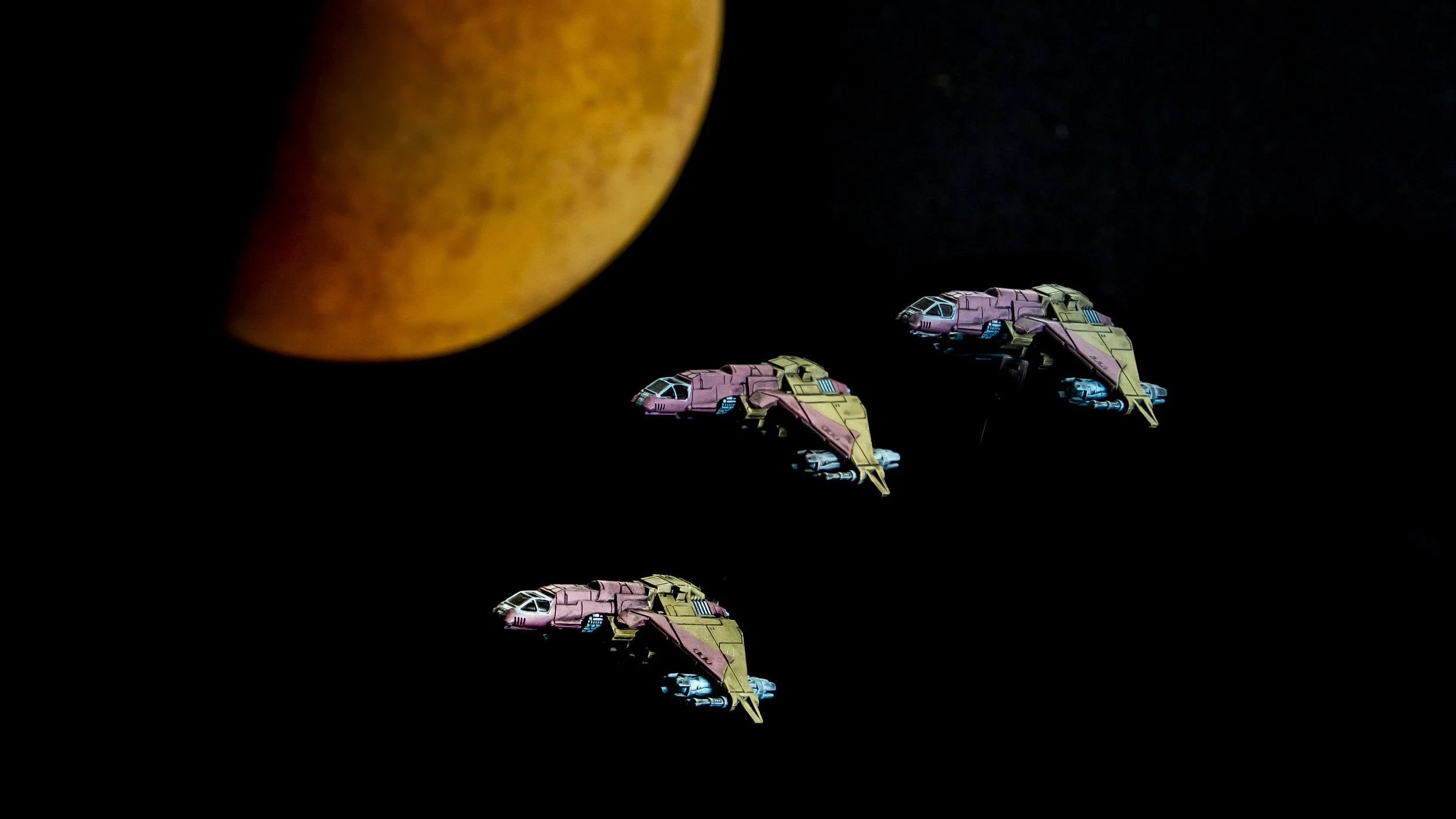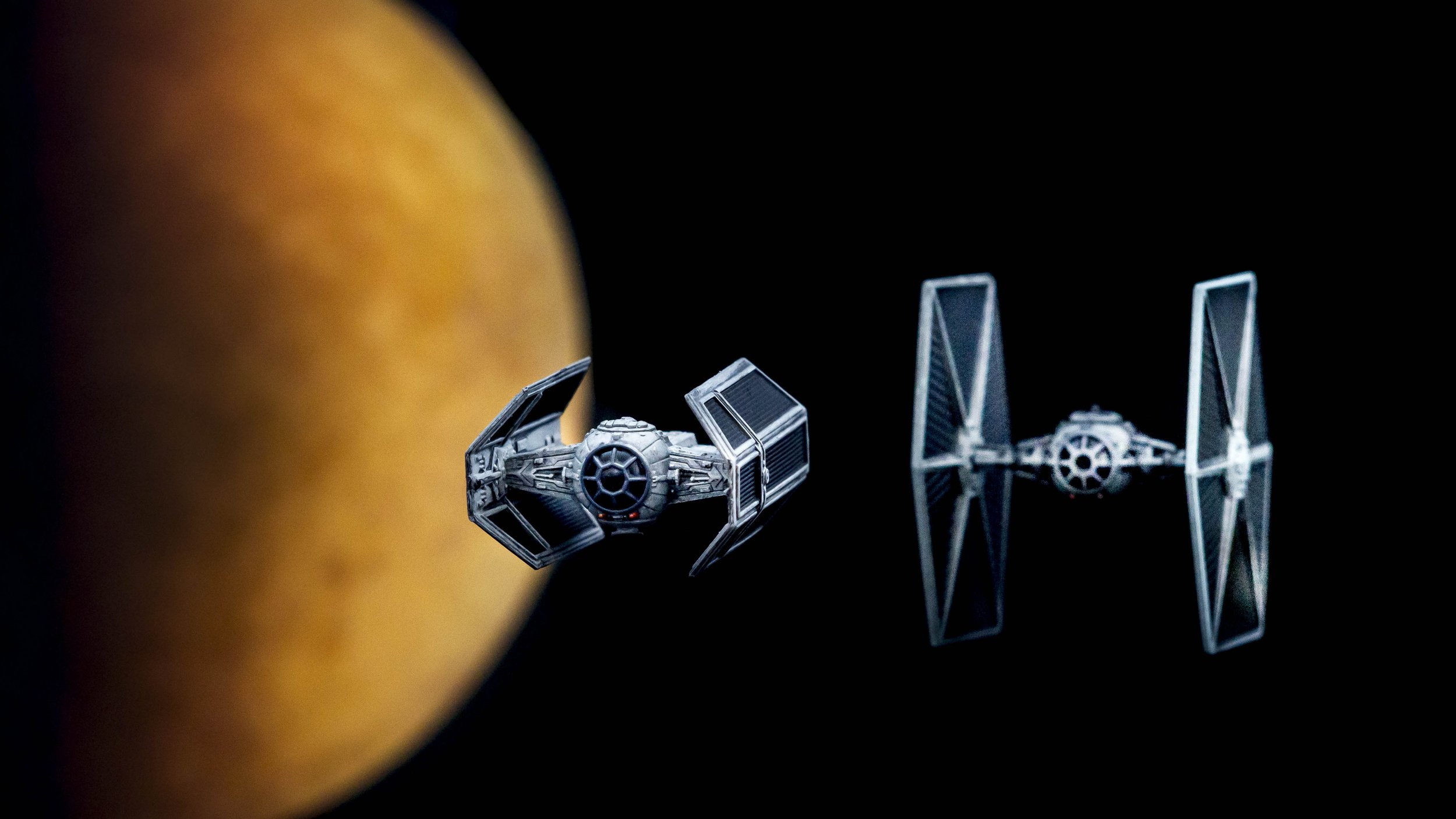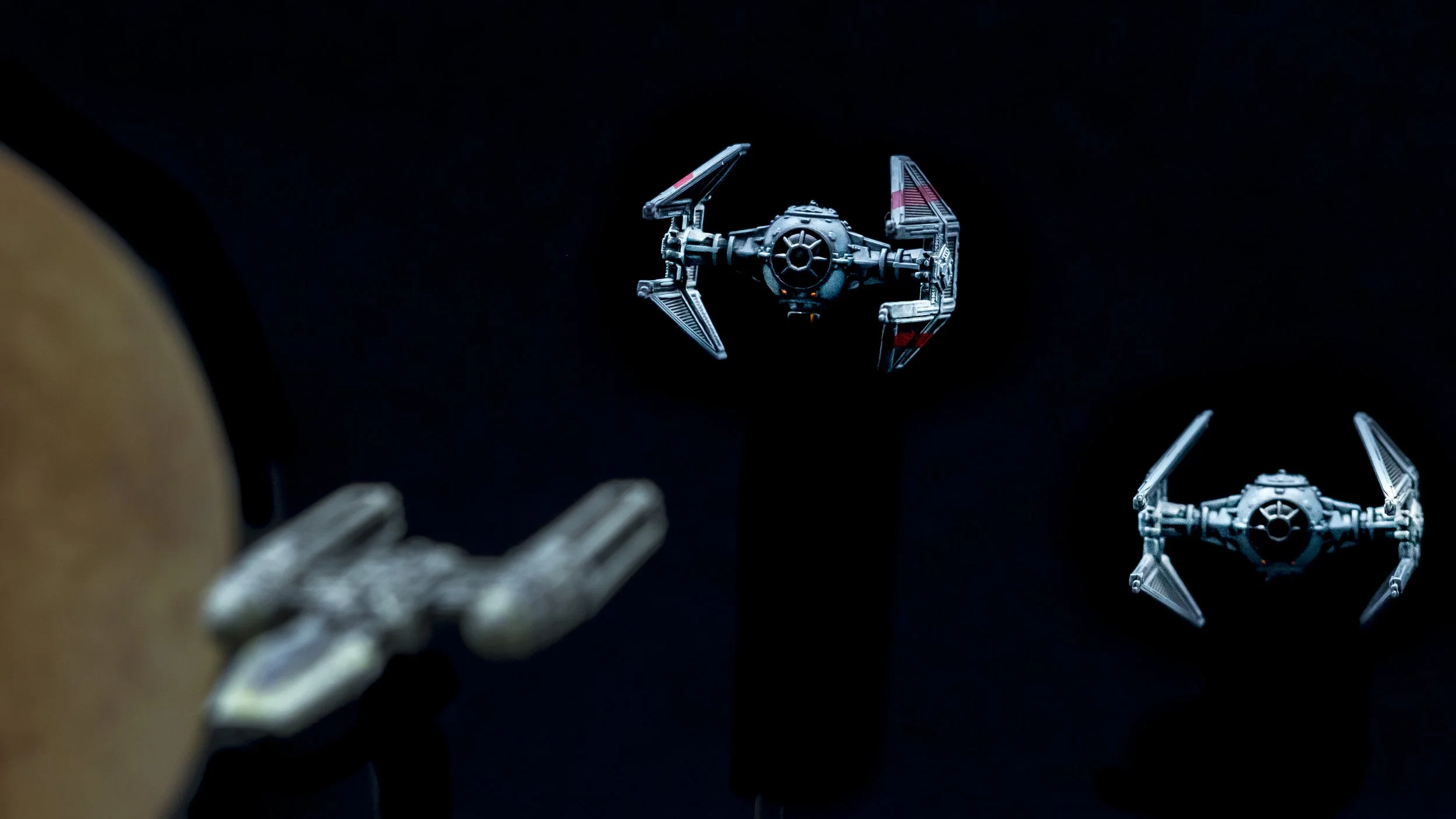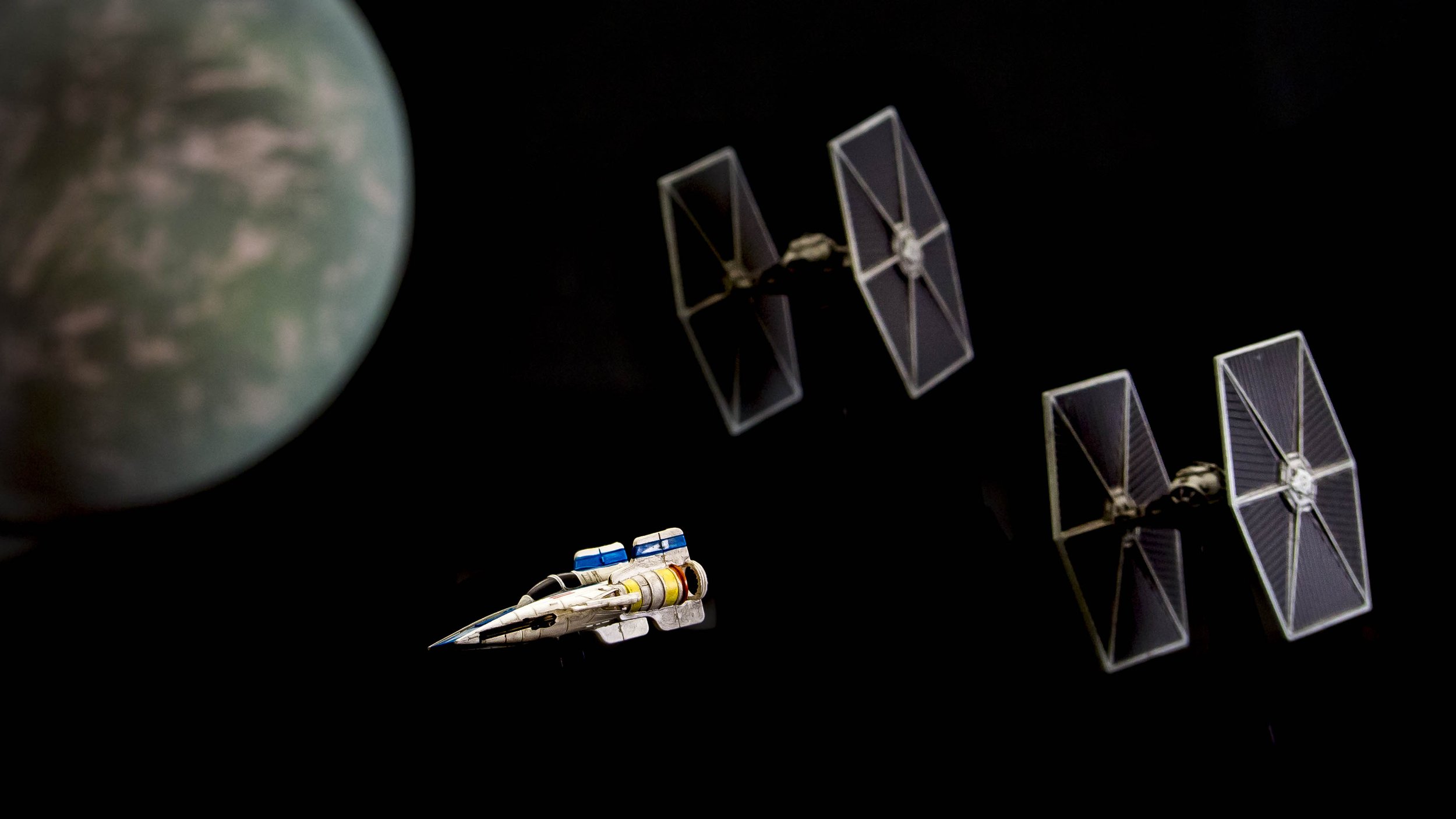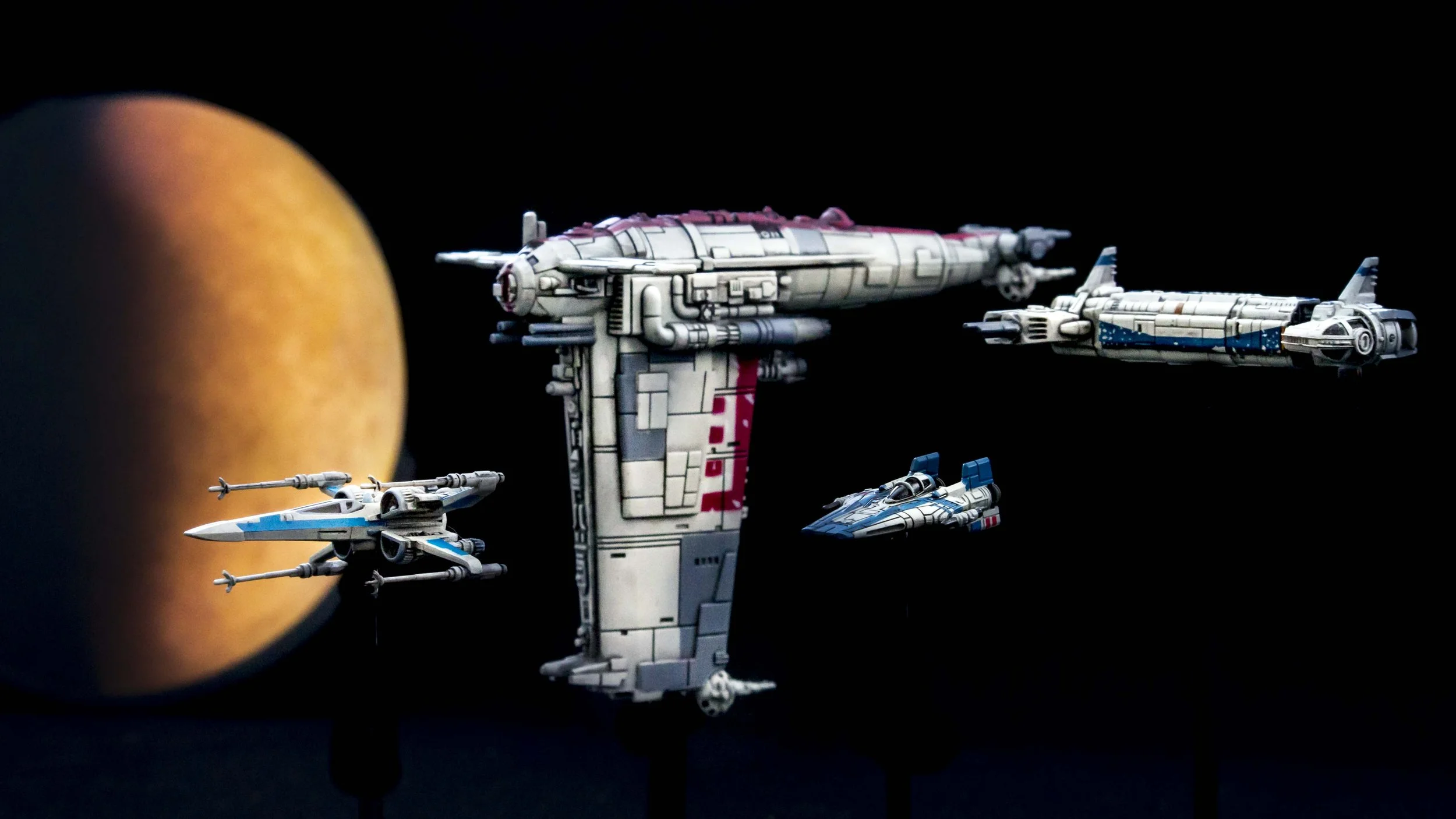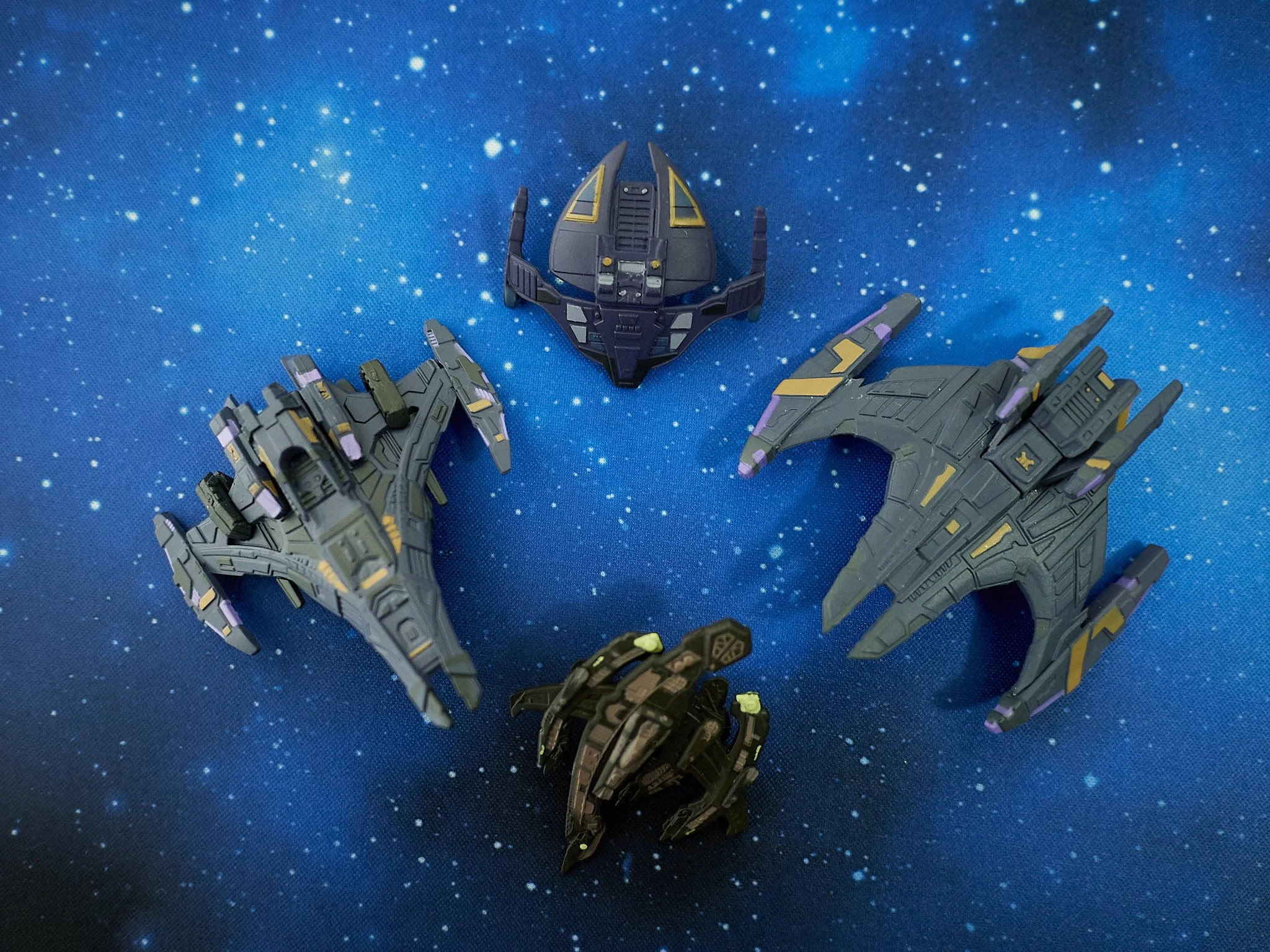Ordnance
Weapons add more punch than standard ships usually have, some considerably more, but they are limited and often one-use or very expensive. Being optional, it is often a matter of loading up a single death-basket, spreading the love/hate or even going ship only, with a different plan in mind like distraction. An optional rule in our games is to hide upgrade cards until used, so you could field a Tie Bomber, load it high with…..bluff, then use it as a blocker, while hitting your opponent with something nasty from left field.
Reduced and streamlined in 2e and some of the really over powered ones are gone or blunted.
The illogical* levels are;
Modifications
I really struggle with these as I feel they take away the clean uniqueness of the ships and sometimes the Pilots also. If a ship cannot do something, then leave it at that. If a Pilot can offer an exception, then take that as the special little snowflake it is. As an example, with Vectored Thrusters every small ship can Barrel Roll, so that becomes a “so-what” or more dangerously a “mad if you don’t” option, effectively re-designing most of the ships as made.
To add to this, in the later game, some of these made others redundant or confused things, many were cost “0”, so a mandatory build and a few just felt like they were a patch.
These are still in the 2e game, but a little better handled and some of the crazy ones, the poor fixes and odd choices are gone or built right in to the core ship.
Elite Pilot Talents
Same as above. You have superior Pilots with superior abilities, then offer similar skills to all those Pilots again, either allowing for an exaggeration or a negation of the Pilots special-ness. From a game perspective EPT’s were often the build defining super upgrade that had a tendency to break balance and one of the upgrades that 2e severely restrained.
Heavily reduced in both power and availability, these are more logical to add to Pilots as a one-off trick of squad tactic, but I still dislike them.
Titles
These come in two forms, named and generic. The named ones are basically Mods outside of legal, or “ghost ship” extra abilities attributed to the thing that makes ship “X” special like the Falcon gaining Evade, which I would have thought was down to the Pilot and Crew. Generics are even worse, often only existing to fix game balance issues that other upgrades introduced.
Generic Titles were basically internal game system upgrades or fixes for them.
It is interesting to note that all three of these in particular have gone in a very different direction in the second edition game. There are named Titles, usually making more sense, but the generics are no longer needed so are dropped. Most changes absorbed into the 2e ships.
The last is Tech, which not bad by design, just limited to later ships, so irrelevant basically.
Examples;
The Tie Interceptor in this most basic version of the game** is the only ship that has all three of the manoeuvre based actions available (Boost, Roll, Evade) as well as speed white 5, pilots that tend to hero these and a huge array of green moves. It is fragile with no shields and has no ordnance options or Target Lock***. It is the Shrike.
The A-Wing is even faster, the fastest ship in the game, has the TL action, but looses Barrel Roll, so one in-one out. One pilot has the Roll Action as their unique thing, being all the cooler for it, being one of the few ships in the game with all five Actions. It has Ordnance and shields and lots of greens moves. It is the Sparrow Hawk.
The Tie Advanced is like the A-Wing, just not as fast losing the Boost action, but has Roll, TL and Evade (see the dynamic here of four actions-always including Focus-but never or rarely all five). It also has Missiles, so it is like the A-Wing, but more about re-positioning than speed. It is the Eagle.
The Scum generally lack speed, but gain slipperiness and tend to trade off Shields for more Hull. Using the Star Viper as an example of an Interceptor style ship, you get speed white 4 with Boost, Target Lock, Roll and S-Loops (Dalan gets the Talon Roll) with Torpedoes. Slower but trickier.
Patterns form and balance is retained, mostly and that rock-paper-scissors thing comes out. Unlike Chess, the game has some built in variety, but not too much and perfect balance is boring.
The manoeuvres, actions, upgrades and pilots of this paired down game still give the player almost unlimited options within a 100 point squad. As a game it is sound and deep, as a simulation, cannon is adhered to. What they do not do is allow a multiple stacked Action economy to rule.
As an added variable we allow both main factions to “hire” Scum, but as Scum are also broken into sub-factions (and un-aligned), they are limited to a main and one other.
Actions are an intrinsic part of the game. They are often the advantage some ships and better pilots have or take away from others, but in the later 1e meta, stacking Elite Pilot Talents, Mods, Titles with the above meant that more actions won the game, all else became increasingly irrelevant.
The fix for this was basically 2e, with the benefit of hindsight.
The beauty of the simpler game is the ease with which it’s different game elements work together and the power of the exceptions. This was the core idea of the game in the first place and it was brilliant.
The Y-Wing for example looks pretty boring in 1e, but it is cheap and has a Droid, Turret and Torps, so it’s role as stable weapons platform that needs an escort is retained. Plenty there from a squad perspective and no other ship is startlingly better overall.








